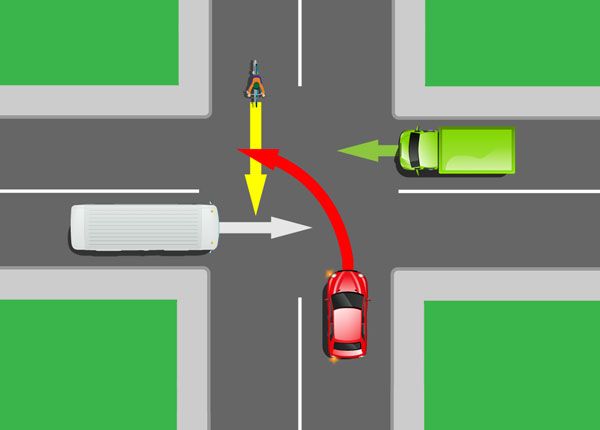
Rules of The Road: Driving and Passing Traffic on The Hard Shoulder
Updated Nov. 12, 2019Road shoulders are intended for emergency use only. In general, motorists should not drive on the shoulder unless it is necessary to avoid a collision or to remove a disabled vehicle from the roadway. The rules governing when and how drivers may use the shoulder of the roadway may vary from state to state. While the general guidelines below apply in most situations, it is vital to check your local driver’s manual for state-specific laws.
Remember to activate your hazard lights when stopping a disabled vehicle on the road shoulder – even during the day.
Rules for using shoulders on the right
If the situation demands it and if it is safe to do so, a motorist may use the shoulder on the right side of the roadway to:
-
1

Park, stop or wait
-
2

Accelerate tomerge with trafficin the main driving lanes
-
3

Decelerate prior to turning
-
4

-
5

Pass another vehicle in the right driving lane that has stopped, is disabled or is making a left turn
-
6

Avoid a collision
-
7

Give way to anemergency response vehicledisplaying flashing lights and sounding a siren
-
8

Make room for acyclist
-
9

Follow instructions given by a traffic control device, police officer or another person authorized to direct traffic
Rules for using shoulders on the left
If using the shoulder is necessary, it is usually safer and more logical to use the shoulder on the right side of the street. However, exceptional circumstances may warrant the use of the left shoulder. For instance:
-
1

If you must remove your disabled vehicle from the roadway or pull over for another reason, yet traffic or road conditions prevent you from reaching the right-hand shoulder.
-
2

If using the left shoulder to avoid a collision.
-
3

To make space for an emergency response vehicle.
-
4

If directed to use the left shoulder by a traffic control device or authorized traffic control personnel.
Passing traffic on the shoulder
Motorists must never drive onto the road shoulder with the sole intent of passing another vehicle. Using the shoulder to pass is only permissible if remaining in the main driving lane would cause a collision; for instance, if the driver ahead of you stops suddenly and you do not have time to slow down to avoid hitting them.
Driving along the road shoulder to get ahead of slow or stopped traffic is illegal in every state. Do not be tempted to use the shoulder in this way, as it will aggravate and endanger other road users. Traveling in the shoulder to overtake other vehicles is considered reckless driving and could result in a serious ticket, points added to your license or a license suspension.




